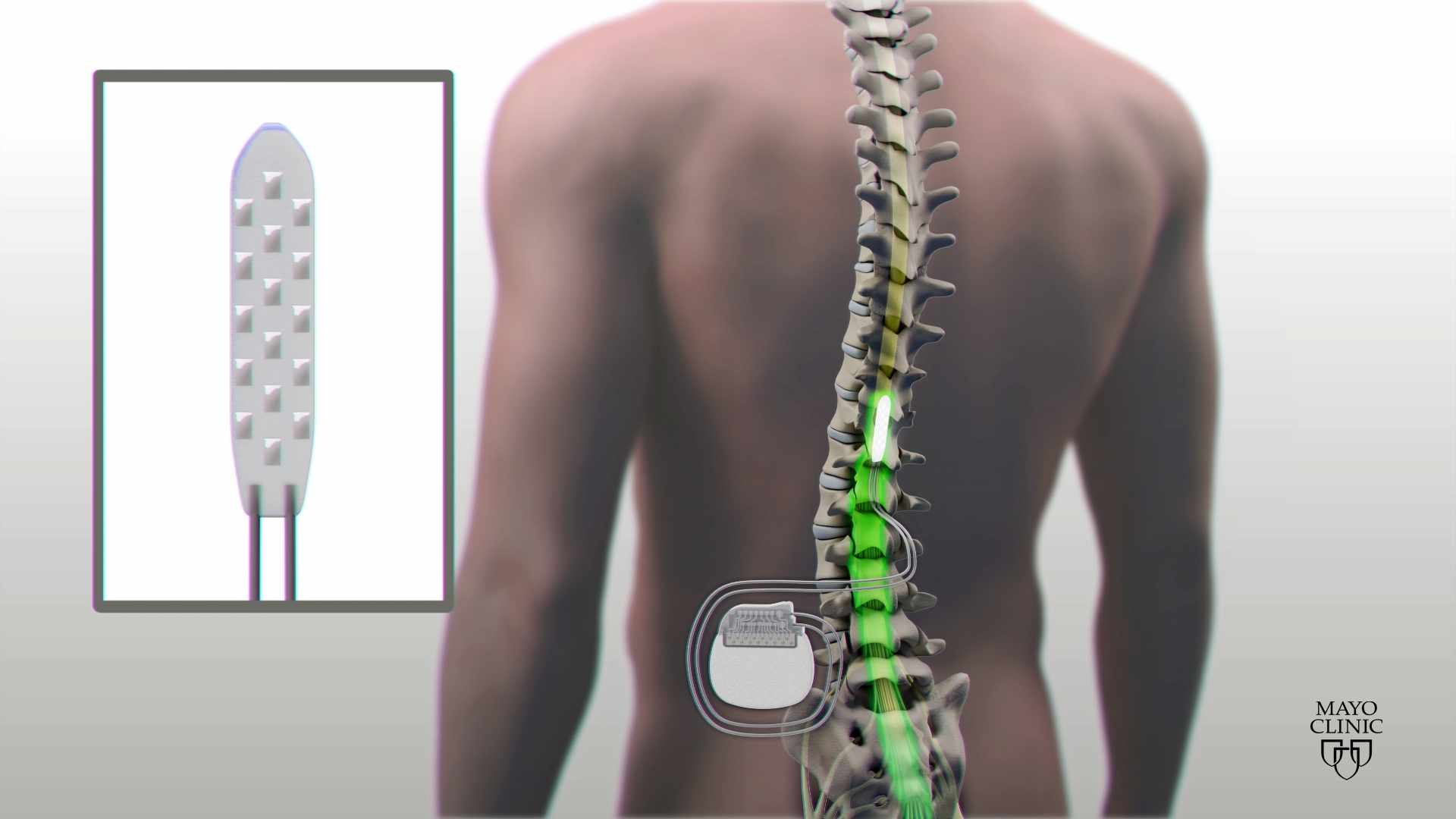-
Featured News
Man moves paralyzed legs using device that stimulates spinal cord
 ROCHESTER, Minn. – Mayo Clinic researchers used electrical stimulation on the spinal cord and intense physical therapy to help a man intentionally move his paralyzed legs, stand and make steplike motions for the first time in three years.
ROCHESTER, Minn. – Mayo Clinic researchers used electrical stimulation on the spinal cord and intense physical therapy to help a man intentionally move his paralyzed legs, stand and make steplike motions for the first time in three years.
The case, the result of collaboration with UCLA researchers, appears today in Mayo Clinic Proceedings. Researchers say these results offer further evidence that a combination of this technology and rehabilitation may help patients with spinal cord injuries regain control over previously paralyzed movements, such as steplike actions, balance control and standing.
For a profile on Jered Chinnock and more on the research, visit the Mayo Clinic News Network.
“We’re really excited, because our results went beyond our expectations,” says neurosurgeon Kendall Lee, M.D., Ph.D., principal investigator and director of Mayo Clinic’s Neural Engineering Laboratory. “These are initial findings, but the patient is continuing to make progress.”
The 26-year-old patient injured his spinal cord at the sixth thoracic vertebrae in the middle of his back three years earlier. He was diagnosed with a motor complete spinal cord injury, meaning he could not move or feel anything below the middle of his torso.
The study started with the patient going through 22 weeks of physical therapy. He had three training sessions a week to prepare his muscles for attempting tasks during spinal cord stimulation. He was tested for changes regularly. Some results led researchers to characterize his injury further as discomplete, suggesting dormant connections across his injury may remain.
Following physical therapy, he underwent surgery to implant an electrode in the epidural space near the spinal cord below the injured area. The electrode is connected to a computer-controlled device under the skin in the patient’s abdomen. This device, for which Mayo Clinic received permission from the U.S. Food and Drug Administration for off-label use, sends electrical current to the spinal cord, enabling the patient to create movement.
After a three-week recovery period from surgery, the patient resumed physical therapy with stimulation settings adjusted to enable movements. In the first two weeks, he intentionally was able to:
- Control his muscles while lying on his side, resulting in leg movements
- Make steplike motions while lying on his side and standing with partial support
- Stand independently using his arms on support bars for balance
Intentional, or volitional, movement means the patient’s brain is sending a signal to motor neurons in his spinal cord to move his legs purposefully.
“This has really set the tone for our post-surgical rehabilitation – trying to use that function the patient recovered to drive even more return of abilities,” says Kristin Zhao, Ph.D., co-principal investigator and director of Mayo Clinic’s Assistive and Restorative Technology Laboratory.
The Mayo researchers worked closely with the team of V. Reggie Edgerton, Ph.D., at UCLA on this study, which replicates earlier research done at the University of Louisville. The Mayo study marks the first time a patient intentionally controlled previously paralyzed functions within the first two weeks of stimulation.
The data suggest that people with discomplete spinal cord injuries may be candidates for epidural stimulation therapy. However, more research is needed into how a discomplete injury contributes to recovering function.
Teams from Mayo Clinic’s departments of Neurosurgery and Physical Medicine and Rehabilitation, and the Division of Engineering collaborated on this project.
“While these are early results, it speaks to how Mayo Clinic researchers relentlessly pursue discoveries and innovative solutions that address the unmet needs of patients,” says Gregory Gores, M.D., executive dean of research, Mayo Clinic. “These teams highlight Mayo Clinic’s unique culture of collaboration, which brings together scientists and physician experts who work side by side to accelerate scientific discoveries into critical advances for patient care.”
Co-authors are:
- Peter Grahn, Ph.D., Mayo Clinic
- Igor Lavrov, M.D., Ph.D., Mayo Clinic
- Dimitry Sayenko, Ph.D., UCLA
- Meegan Van Straaten, Mayo Clinic
- Megan Gill, Mayo Clinic
- Jeffrey Strommen, M.D., Mayo Clinic
- Jonathan Calvert, Mayo Clinic
- Dina Drubach, Mayo Clinic
- Lisa Beck, Mayo Clinic
- Margaux Linde, Mayo Clinic
- Andrew Thoreson, Mayo Clinic
- Cesar Lopez, Mayo Clinic
- Aldo Mendez, M.D., Mayo Clinic
- Parag Gad, Ph.D., UCLA
- Yury Gerasimenko, Ph.D., UCLA
The research was funded by Craig H. Neilsen Foundation, Jack Jablonski BEL13VE in Miracles Foundation, Mayo Clinic Center for Clinical and Translational Sciences, Mayo Clinic Rehabilitation Medicine Research Center, Mayo Clinic Transform the Practice, and The Grainger Foundation.
The Broccoli Foundation and Christopher and Dana Reeve Foundation supported the UCLA team.
Drs. Edgerton, Gerasimenko and Gad have a financial interest in NeuroRecovery Technologies.
###
About Mayo Clinic Proceedings
Mayo Clinic Proceedings is a monthly peer-reviewed medical journal that publishes original articles and reviews dealing with clinical and laboratory medicine, clinical research, basic science research, and clinical epidemiology. Mayo Clinic Proceedings is sponsored by Mayo Foundation for Medical Education and Research as part of its commitment to physician education. It publishes submissions from authors worldwide. The journal has been published for more than 80 years and has a circulation of 130,000. Articles are at mayoclinicproceedings.org.
About Mayo Clinic
Mayo Clinic is a nonprofit organization committed to clinical practice, education and research, providing expert, whole-person care to everyone who needs healing. For more information, visit mayoclinic.org/about-mayo-clinic or newsnetwork.mayoclinic.org.
MEDIA CONTACTS
Susan Barber Lindquist or Rhoda Madson, Mayo Clinic Public Affairs, 507-284-5005, newsbureau@mayo.edu







